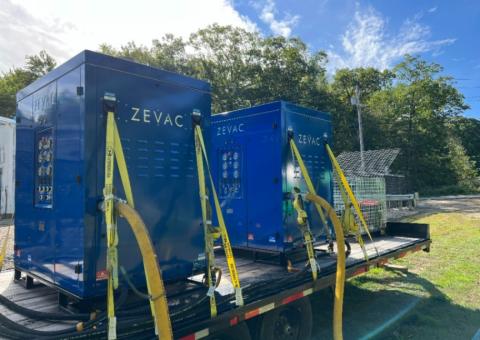Unitil Corporation, (Unitil.com), a provider of natural gas and electricity to customers in New England, is making a significant investment in new technology designed to prevent the release of natural gas emissions into the air.
Unitil has purchased two portable “ZEVAC” (Zero Emission Vacuum and Compression) units that allow for natural gas to be safely captured and transferred from one pipeline to another rather than being released directly into the atmosphere.
The process, known as recompression, minimizes greenhouse gas emissions when natural gas must be safely removed from a segment of pipeline that’s being replaced or undergoing other work.
“The use of this innovative equipment is part of the company’s larger emissions reduction plan and our commitment to sustainability. They’ve already been used successfully several times since they were purchased and have proven to be an effective tool to help slash our carbon footprint today and in the years ahead,” said Alec O’Meara, media relations manager at Unitil.
Unitil is committed to cutting company-wide greenhouse gas emissions from 2019 levels by at least 50 percent by 2030 and reaching net-zero emissions by 2050.
The recompression technique is used during a natural gas “blowdown” – a process that involves pumping gas out of a pressurized pipe. In the past, the gas being removed would have been vented into the atmosphere, but through the use of the compression units, most can now be captured, compressed, and injected into an adjacent segment of the pipeline.
The company plans to acquire two additional units in the next few years.
In 2022, Unitil will have saved more than 1.7 million cubic feet of natural gas through the capturing process, which would be enough to heat more than 12 homes for an entire year.
“This process not only has clear environmental benefits, but also enhances public safety as we work to provide our customers with clean, safe and reliable energy,” O’Meara said.
###
Photo Caption
Unitil has purchased two portable “ZEVAC” (Zero Emission Vacuum and Compression) units, seen here in use at a site in Plaistow, N.H., to help prevent the release of natural gas emissions into the atmosphere.


